Diseases and pests of hydrangea
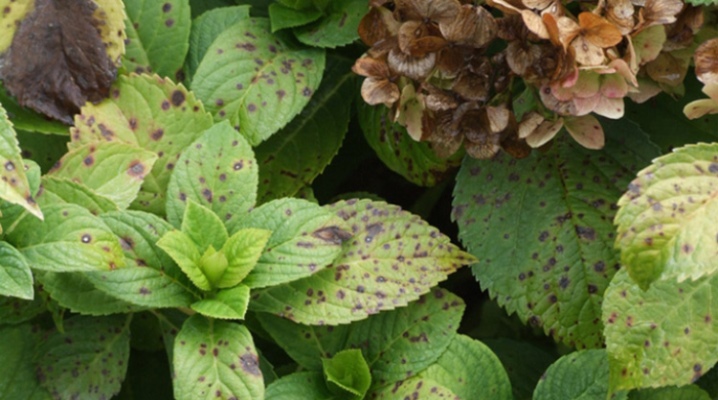
Lush hydrangea is a wonderful flowering plant for decorating living and outdoor spaces, terraces, balconies and flower beds. Luscious green foliage is effectively combined with numerous shades of inflorescences - from white and pink to red, purple and blue. Florists take care of the healthy growth and appearance of the plant, but sometimes problems arise with this.
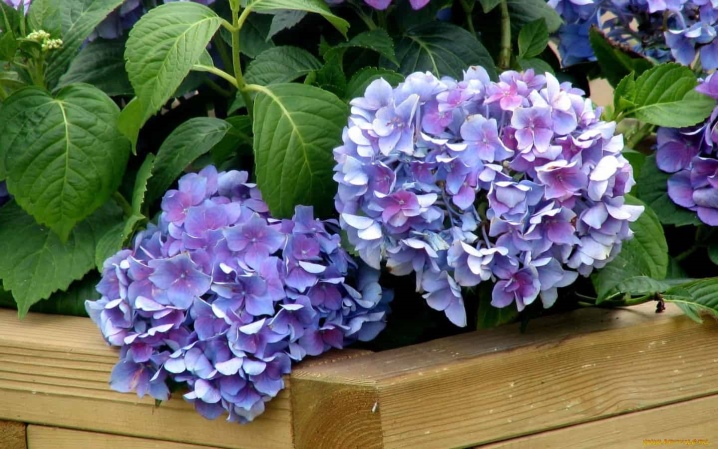
Common leaf diseases and their treatment
Before starting the description of hydrangea diseases, it should be noted that it is not too susceptible to diseases and pests, but still needs constant care and attention. Due to natural factors and improper care, hydrangeas are threatened with wilting. It is important to identify in a timely manner what the problem is and understand how to cope with it on time.

Diseases of this type of flora are of fungal and viral origin.
Fungal
We list the main fungal ailments affecting hydrangea.
White rot
The pathogen infects the roots through the soil. As a result of the influence of the fungus, the hydrangea is deficient in important nutrients and dies after some time.
It is possible to identify an ailment on fresh shoots by their darkening and subsequent whitening. If the vegetation is not treated, so-called sclerotia in the form of black blotches is formed on the whitish "cotton wool".
In the battle against white rot, reliable helpers are fungicides, for example, treatment with Fitosporin, Fundazol, and copper oxychloride is effective.

Gray rot
A symptom of the disease is the softness and wateriness of the tissues of the bush. Humidity leads to the fact that the hydrangea is covered with a gray "fluff". In dry weather, damaged areas dry out and die off, and holes remain in their place.
Primarily in the fight against gray rot, it is necessary to remove infected and dead areas. With the treatment of indoor varieties of hydrangeas, Chistotsvet, Skor and Fundazol do an excellent job. For garden species, it is recommended to apply Rovral Flo 255 SC three times at a 3-week interval.
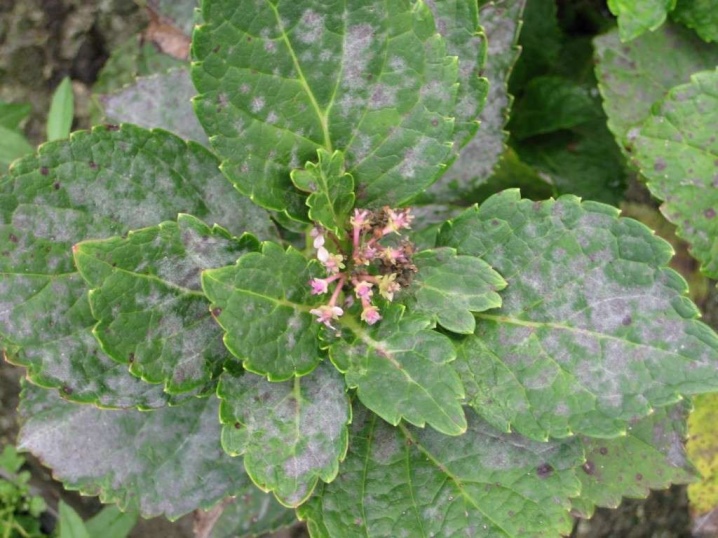
Fusarium (tracheomycosis)
This disease is also known as tracheomycotic wilting, which occurs when hydrangeas are infected with pathogenic fungi that live in the soil. The fungus is able to live for years on the remains of vegetation. Gradually, the roots turn brown, soften and rot. Gradually, the mycelium affects the entire conducting system, which is filled with fungal biological mass. As a result, nutrients cease to flow to the shoots, and the wilting process begins, accompanied by yellowing of the foliage and dropping of buds.
Treatment consists in watering hydrangeas with a special solution prepared from nettle and celandine infused with water.
You can spray the bushes with the preparations "Fundazol", "Topsin-M", and pour the medicinal "Rovral" under the roots.
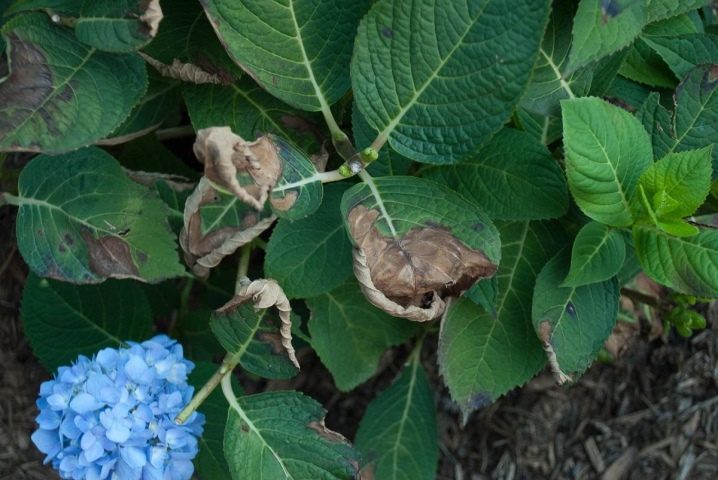
Septoriasis
It is determined by the presence of dark brown spots on the foliage up to 6 mm in diameter. Gradually, infected leaves fall off the trunks. If the hydrangea is not treated, it will soon completely lose its foliage and die. In the advanced stage of septoria, shoots are also covered with spots.
Septoria can be cured only by a radical method, which consists in removing all the affected parts, plus treating the plant itself with preparations based on copper, for example, copper oxychloride or copper sulfate.
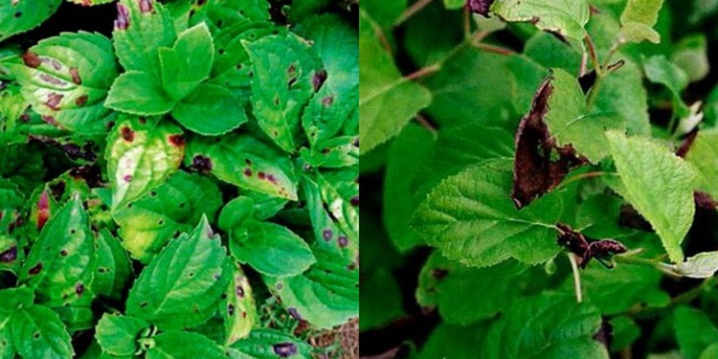
Peronosporosis
Being in a humid environment at a temperature of 18-20 with a plus sign entails the development of the described disease. And also the ailment is called downy mildew. On the leaves of a sick hydrangea, greasy specks appear, which turn black in the future.
The bushes will be saved by emergency treatment with a solution of 150 g of soap per 10 liters of water with 15 g of ferrous sulfate.
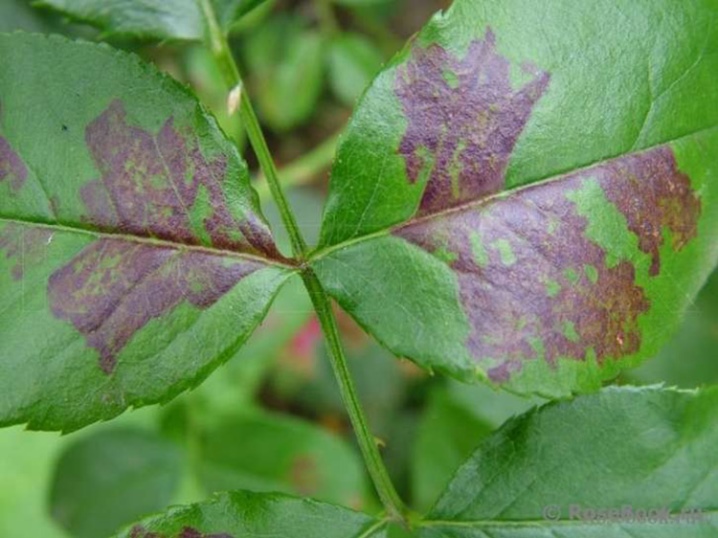
Powdery mildew
It manifests itself as pale green (yellowish) spots on the deciduous part, the back of which subsequently turns brown and becomes covered with a purple or gray bloom. If nothing is done, the plant will throw off all the leaves, deformation of young shoots will occur, which will not be able to survive the winter.
Treatment of the disease is carried out with strong fungicides: "Fitosporin" or "Alirin". In advanced situations "Topaz", "Skor", "Tiovit Jet" drug or treatment with "Pure color" will save you.

Rust
The disease accompanies the appearance of a rusty coating on the deciduous part and inflorescences. The problem can be caused by a high density of plantations or oversaturation of the soil with nitrogen.
Copper oxychloride diluted in 10 liters of water in an amount of 40 g is capable of defeating rust. Fungicides such as Topaz, Ordan or Falcon in the dosage prescribed in the instructions are also effective against it.

Ascochitosis
Ascochitous spotting is manifested on the planting of hydrangeas by the appearance of brown spots of an indefinite shape. If brown spots appear before the leaves bloom, the shrub is sprayed with a solution of Bordeaux mixture (1%, that is, 1 sachet for 10 liters of water). It is necessary to cut off and burn the diseased parts of the bush.
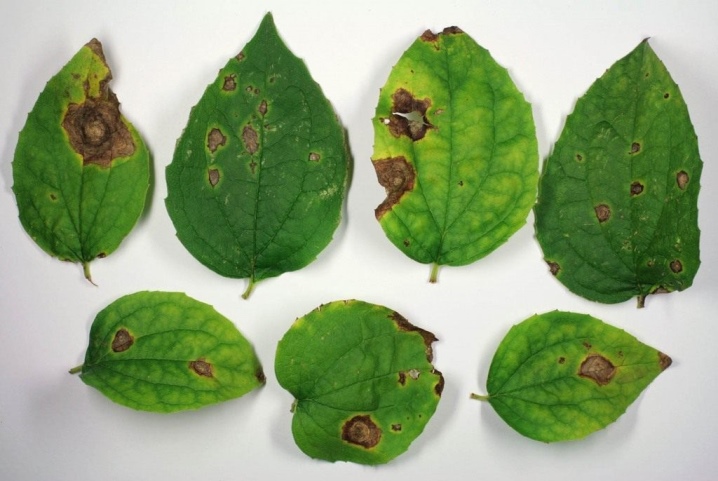
Phylostictosis
Phylostictic (brown) spotting is found on foliage in the form of large-scale brownish spots with a noticeable crimson border. Then holes are formed in these places.
It is possible to get rid of Phyllosticta rosae after spraying the plant with Strobi (4 g per 10 l). And also effectively apply 50 g of "Abiga-Peak", diluted in 1⁄2 bucket of water.
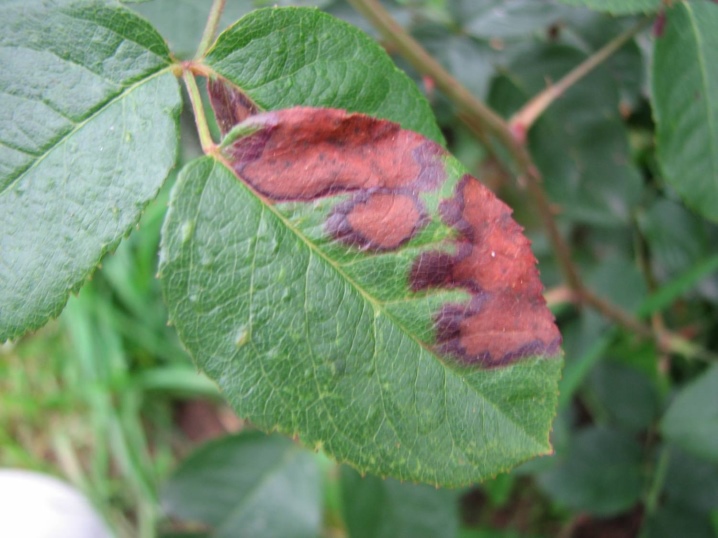
Viral
Viruses also infect hydrangea.
Ring spot
The most common virus that damages hydrangeas. Initially, blurry, annular specks up to 2 cm in diameter appear on the leaves. The edges dry out, and gradually deformation of the leaves occurs, followed by the death of the plant. The disease affects the ability to lay buds: hydrangea loses it at all or does not please with the appearance of flowers.
It is not yet possible to cure ring spotting. For planting, you need to carefully select high-quality seedlings, since this virus is transmitted by seedlings. And if propagation by cuttings is to be made, you need to make sure of the health of the mother plant.
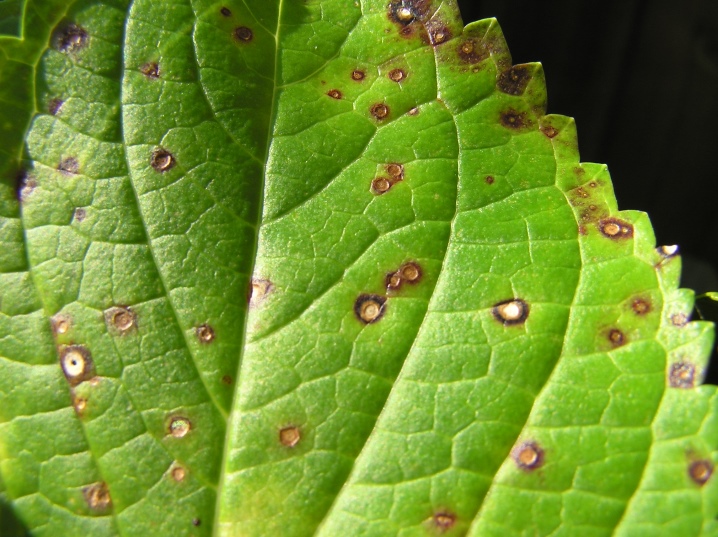
In addition to the listed diseases, chlorosis can affect the hydrangea. This disease causes an insufficient content of iron in the soil or impaired metabolic processes directly in the plant, and therefore it does not absorb iron. A sure sign of the initial stage of chlorosis is lightening and yellowing foliage with pronounced dark veins.
At the same time, the leaves decrease in size, the buds are deformed, the leaf plates are twisted and the shoots dry up. In the struggle for the health of the plant, it is important to feed it with agents with iron in its chelated form, such as "Anti-chlorosis" and "Ferovit".
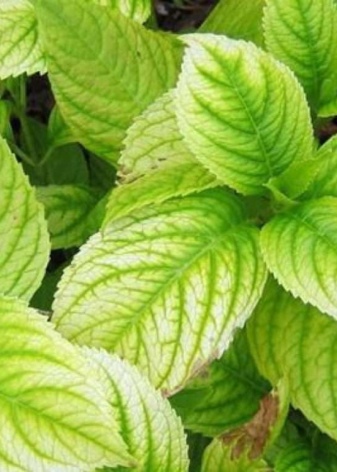
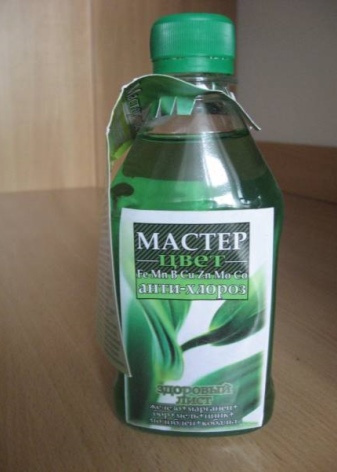
You can prepare a healing composition yourself by diluting 2 g of ferrous sulfate and twice as much citric acid in 1 liter of running water. The prepared solution is sprayed on the leaves at the initial stage of the disease, and with the active process of infection, it is additionally poured under the roots.
Another effective way to get rid of chlorosis is to use an aqueous solution of ferrous sulfate and 40 grams of potassium nitrate diluted in 10 liters of water. A sick hydrangea is spilled with a medicinal solution twice or three times, and after three days the soil is treated with water with iron sulfate dissolved in it in a similar concentration.
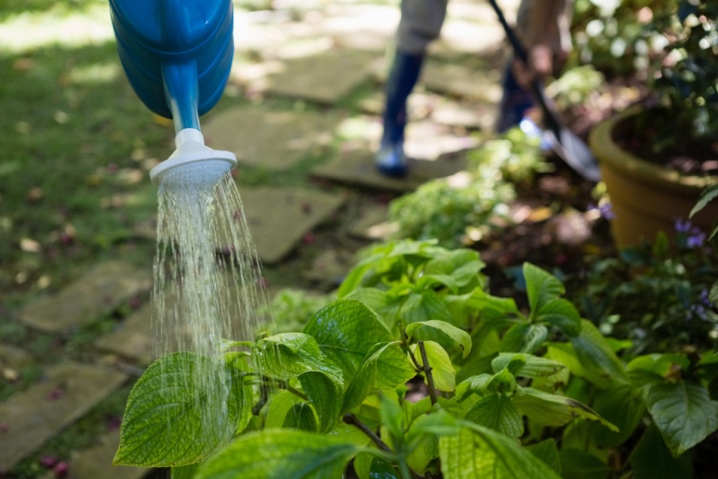
Dry blackening
It manifests itself in pronounced brown patches of spots along the edge of the leaf, which lead to wilting in the future. The reason often lies in the hard water used for irrigation. It is advisable to settle running water for at least about a day before watering.
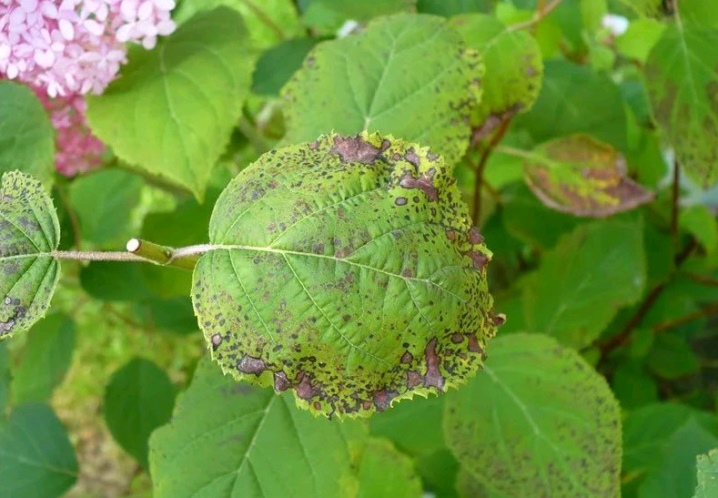
Wet blackening
The appearance of limp, darkened leaves on the plant. These symptoms are facilitated by:
- a sharp change in temperatures;
- through wind;
- too frequent watering;
- heavy soil that retains moisture and prevents air circulation.
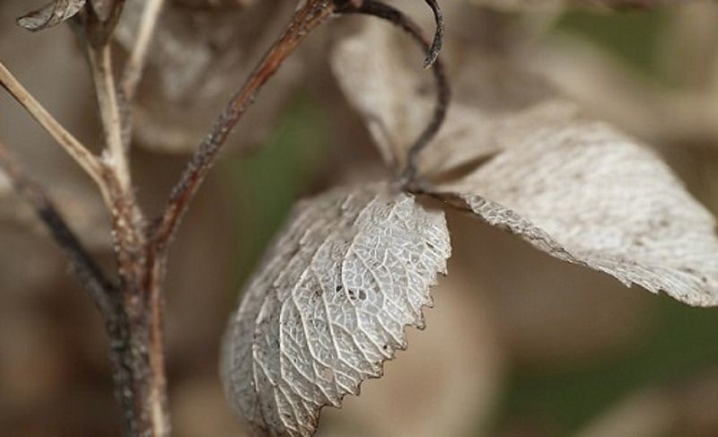
Pests
Insects harm hydrangeas infrequently, but thoroughly, being carriers of many infections and plant exterminators.
Leaf aphid
It sucks out cell juice from the shoots. You can determine the infection by the sugary secretions, which also serve as the nutritional basis for the sooty fungus. At the same time, aphids are able to multiply rapidly, forming large colonies under each leaf.
A flower infected with aphids is very slow in development. If the bushes are not treated, in the stage of severe infection, the leaves are deformed and turn yellow, the upper part of the hydrangea bush dies off.
Aphids sit loosely on the plant. With a small amount of it, you can try to gently wash off delicate insects with a powerful water jet. An effective measure will be the treatment of the bush with soapy water.
If the situation is neglected, you will have to resort to insecticides such as Fitoverma, Zubr, Aktara, Akarina or Iskra. In nature, aphids are destroyed by ladybugs.
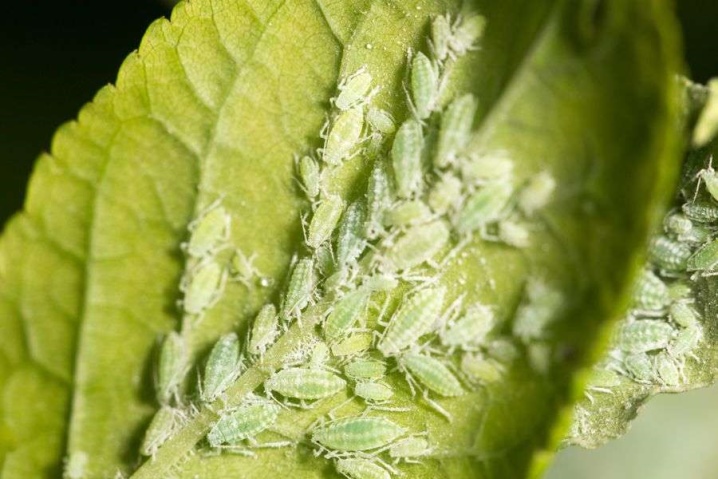
Gall nematode
Small worms start when the soil moisture is too high. The nematode is calculated by the appearance of galls (growths) on the stems and rhizome. Tiny nematodes make their way along the roots to stems and foliage, leaving a trail of poisonous secretions. Affected hydrangeas stop growing and most often die.
Professional gardeners recommend uprooting the plant and burning it. But before the radical method, it is worth trying spraying a diseased bush with "Karbofos". It is worth remembering that direct sunlight upon contact with the agent makes it ineffective, and the plant cannot be reanimated.
Therefore, it is advisable to spray before the beginning of flowering plants (due to the threat of destruction of bees). The solution is prepared at the rate of 75 g of the product in a bucket of water. The seedlings are cultivated on a fine and windless sunny day at an air temperature of +15 degrees Celsius.

Spider mite
It settles on the back of the foliage. It is accompanied by the appearance of small yellow spots, gradually forming a marble pattern. With heat and dryness, it can entangle the entire plant in just a week. In this case, a thin cobweb and the pests themselves are noticeable. Soon the leaves dry out and fall off.
To exterminate ticks at the primary stage, you can treat the entire bush with ordinary soapy water.
With numerous pests, you will have to resort to drugs like "Tiofos", "Akarin", "Lightning" or "Fitoverma".
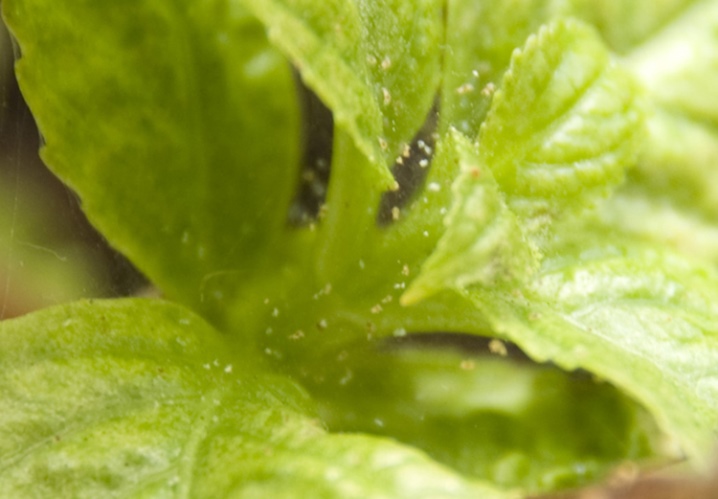
Leaf beetle
The insect damages the entire plant by eating large holes in its leaves. The larvae eat up the foliage to the very veins. A harmful insect gnaws stems from the inside. Partially, the larvae live in the ground, where they damage the root system of the bush.
Manual collection of larvae and adult leaf beetles, pruning of damaged areas and subsequent burning can help to exterminate the leaf beetle.
With the onset of frost, it is worth digging the soil around the hydrangea in order to exterminate the hibernating larvae.
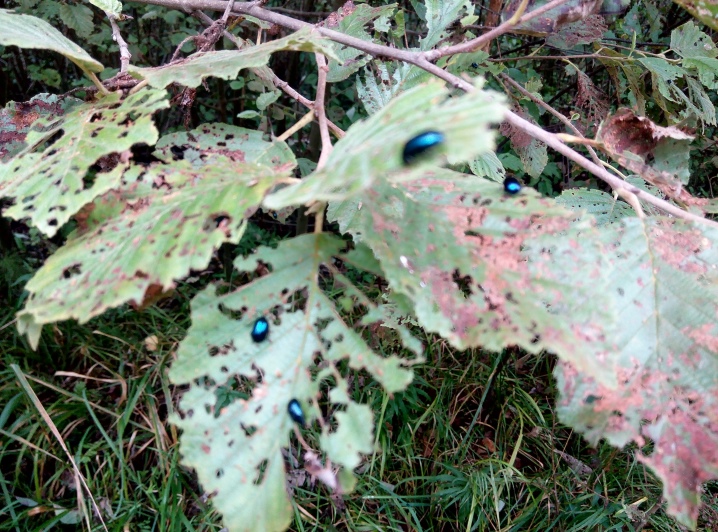
Slug
Basically, they start in places where hydrangeas are densely planted. Slugs eat foliage. A preparation in granules - "Molluscicide" will help to get rid of slippery parasites. It needs to be scattered over the surface of the soil where slugs have been seen.
Snail
The grape snail, otherwise called amber, prefers to inhabit damp, shaded and dense plantings. The pest begins by eating the buds, and then is mistaken for the leaves and damages the young shoots. The most dangerous snails for bushes wintering covered.
Removed mechanically, including masonry. This is done all spring and summer.

Why is it growing poorly?
Every year a healthy bush grows new shoots and grows vigorously. If this does not happen, and the hydrangea dies, there may be a number of reasons for this.
Unsuccessful wintering
Not all varieties of hydrangea are distinguished by good winter hardiness, so this fact must be taken into account. This becomes especially evident after a cold winter, when the plant spends it unprotected. When choosing seedlings, you should prefer those species that can grow in the climatic realities of a particular area. But they also need additional care during severely frosty winter periods, especially with minimal snow cover.
Without a cover with a "humus" pillow, the roots freeze, and there is a risk that the aerial part of the plant will suffer.
The shrub will be helped by sanitary pruning and the regular introduction of feed from complex dressings.
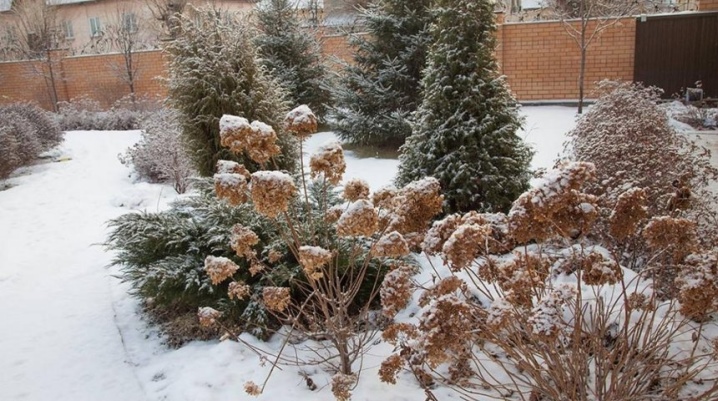
Incorrect cropping
This process is necessary for absolutely all hydrangeas, because pruning contributes to the branching of the bush. But some species need only minimal intervention, such as the serrated hydrangea varieties, as well as the prickly, coarse and oakleaf varieties. It is undesirable to radically cut the listed varieties.
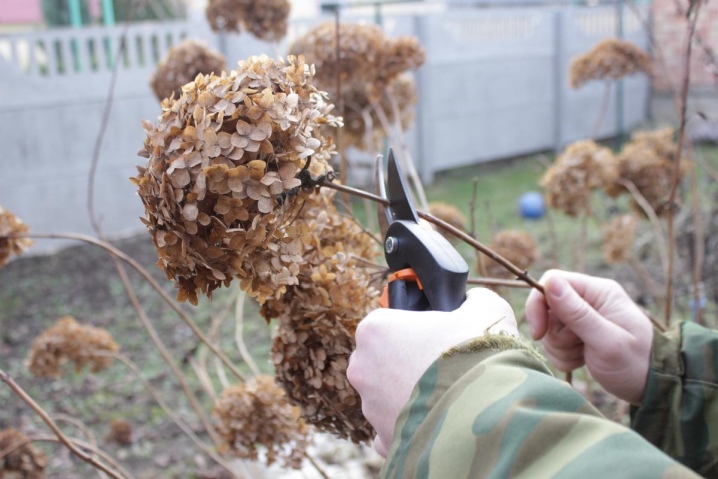
Depleted soil
Insufficient growth on "starving" shrubs is especially pronounced. Without regular nutrition, hydrangeas are only trying to survive, that is, they are not at all up to growth. An obvious impetus will be given by the introduction of nitrogen supplements early in the spring. They will help revive the plant and grow it. Before laying the buds, you need to fertilize with mineral complexes.
Large-leaved and paniculate hydrangea species prefer to grow in acidic soils. It is important to know about this, periodically acidifying the soil with oxalic acid (2 tablespoons per 10 liters of water).
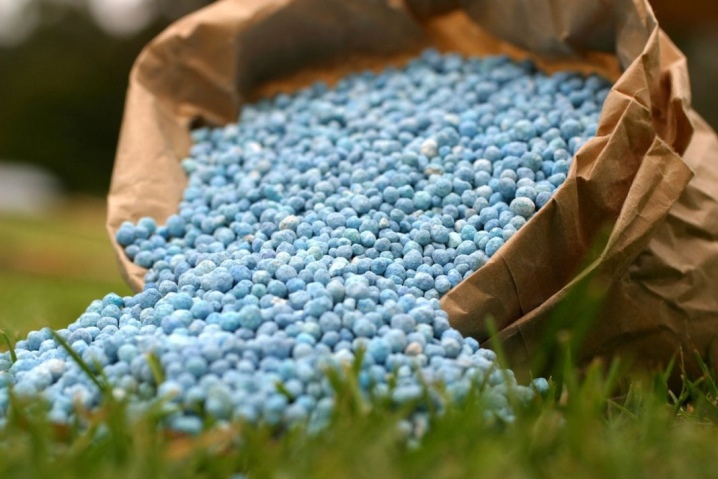
Preventive measures
Better than any treatment is timely and correct prevention. If the bush is healthy, it is unlikely to get sick, but if it does, the hydrangea will be resistant to illness. A weakened plant is very vulnerable to viruses, fungi or pests that can seriously harm it.
Disease prevention and protection from pests will be competent home care. For a healthy flower, it is necessary to correctly determine the place for planting it. Foliage and flowers wither quickly under the scorching sun. Therefore, hydrangea will grow optimally in partial shade conditions.
Adequate watering is also important for the plant. Hydrangeas prefer moisture, so it is important to keep the soil from drying out. In the heat, you need to water the bush every other day.
It is also important to choose the right soil for planting hydrangea bushes. It will be difficult for the plant to survive in heavy alkaline soil. It needs to grow in light, acidic soil. It is this kind of soil that "breathes" well and allows moisture to pass through.
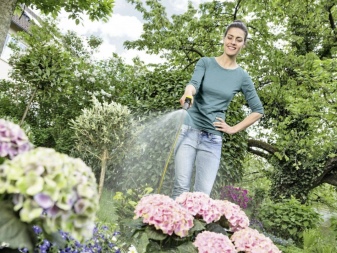
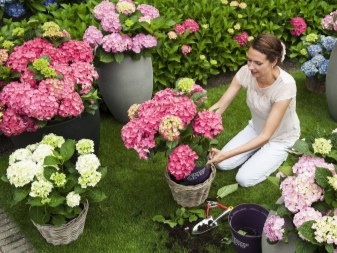
Providing correct and timely feeding is also necessary for hydrangeas. For this, special ready-made nitrogenous fertilizers are useful. In the summer, phosphorus-potassium agents are used, and in the autumn season, phosphorus is mainly used.
Shrub wood also needs preventive treatment. In the spring, before the beginning of the growing season, it is recommended to irrigate the bushes with copper sulfate. As a replacement option - the use of "Topaz", "Iskra" and "Fitosporin" - the most modern effective drugs.
Proper grooming plus constant care equals a healthy hydrangea capable of delighting with lush flowers. It will become one of the brightest decorations of a indoor flower garden or garden plot.
For more information on diseases and pests of hydrangea, see the next video.



































































In my opinion - the most complete and correct review and recommendations about diseases and pests of hydrangea.
Thanks for such a review, apparently calmed down by the lack of iron.
The comment was sent successfully.